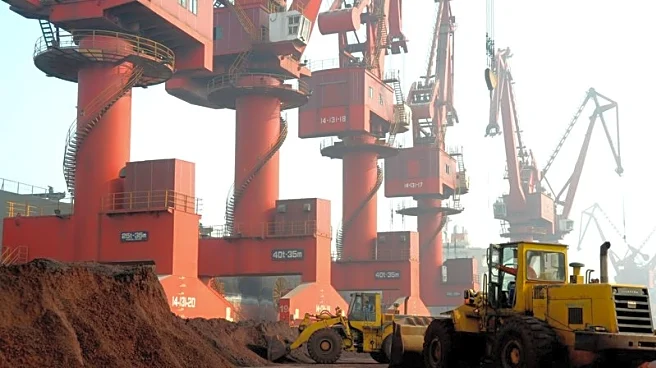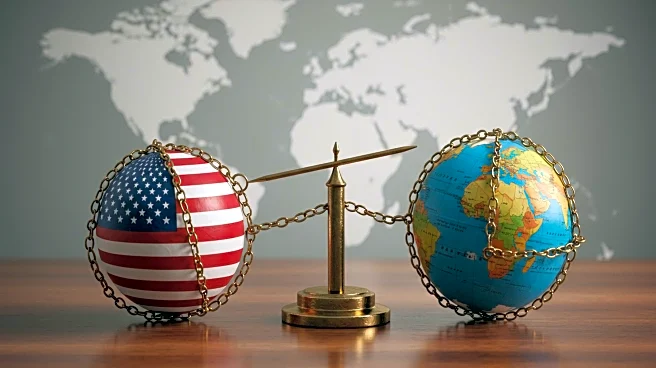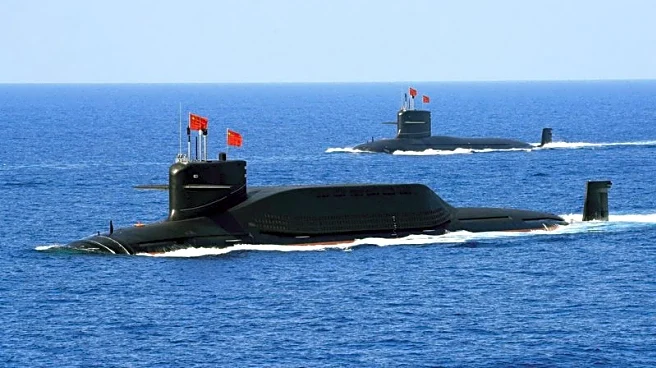What is the story about?
What's Happening?
China's rare earth magnet exports reached a six-month high in July, marking a significant recovery in trade flows of these critical minerals. This surge follows Beijing's agreements with the United States and Europe to increase shipments and ease export controls initially imposed in April as a response to U.S. tariffs. The export volume rose nearly 75% from June, totaling 5,577 metric tons, the highest since January. This recovery aligns with analysts' expectations and represents a 5.7% increase compared to the same month last year. The easing of export controls has helped stabilize global supply chains, which were disrupted earlier in the year, causing production halts for some automakers outside China due to a shortage of rare earths.
Why It's Important?
The recovery in China's rare earth magnet exports is crucial for industries reliant on these materials, particularly the electric vehicle sector. Rare earth magnets are essential components in electric motors, and their availability directly impacts production capabilities. The agreements to ease export controls reflect a strategic move by China to maintain its position as a leading supplier while addressing international trade tensions. This development benefits automakers and other industries in the U.S. and Europe by ensuring a steady supply of these critical materials, potentially reducing production costs and stabilizing market prices.
What's Next?
The continued export recovery may lead to further negotiations between China and its trade partners to ensure long-term stability in rare earth supplies. Stakeholders, including automakers and tech companies, are likely to monitor these developments closely, as any changes in export policies could impact their production strategies. Additionally, the U.S. and Europe may seek to diversify their sources of rare earths to mitigate future risks associated with supply chain disruptions.
Beyond the Headlines
The easing of export controls by China may also have geopolitical implications, as it reflects a willingness to engage in trade diplomacy amidst ongoing tensions with the U.S. and Europe. This move could influence future negotiations on other trade-related issues, potentially leading to a more collaborative approach in addressing global supply chain challenges.
AI Generated Content
Do you find this article useful?













